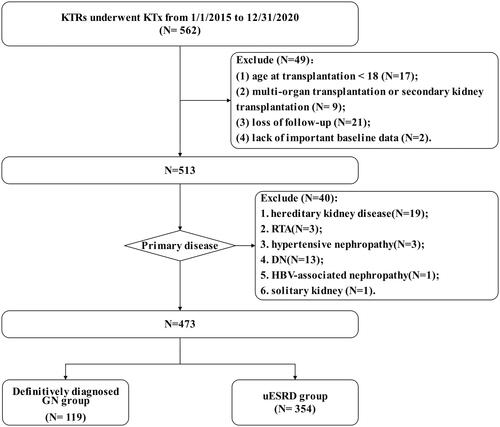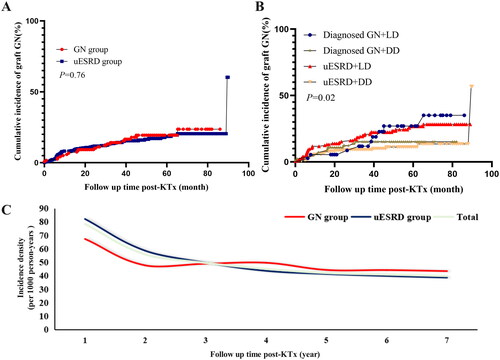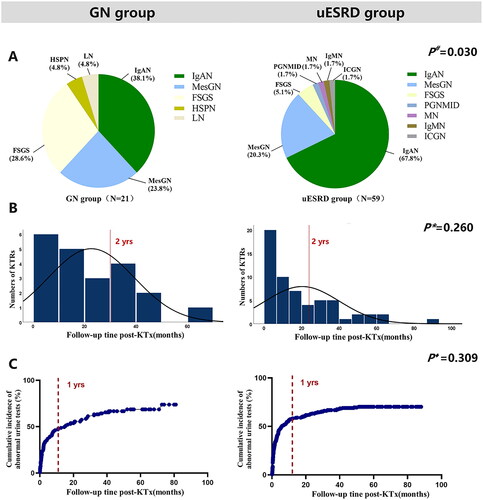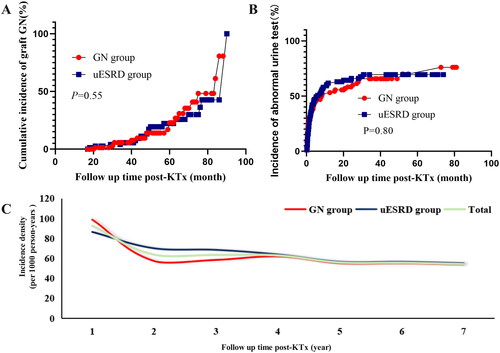Figures & data
Figure 1. Flow chart of selection of the study population. GN: glomerulonephritis; uESRD: unknown causes of end-stage renal disease; RTA: renal tubular acidosis; DN: diabetic nephropathy; HBV: hepatitis B virus.

Table 1. Baseline data for kidney transplant recipients.
Figure 2. The incidence of graft GN among groups. (A) the cumulative incidence of graft GN between GN group and uESRD group; (B) the cumulative incidence of graft GN after receiving LD or DD transplant in recipients with diagnosed GN or uESRD; (C) Incidence density of graft GN in KTRs among groups. GN: glomerulonephritis; uESRD: unknown causes of end-stage renal disease; LD: living donor; DD: deceased donor.

Figure 3. The distribution of GN subtypes (A), diagnosis time (B), and incidence of abnormal urine test (C) in GN group and uESRD group. #Distribution of glomerular disease subtypes in GN group and uESRD group after transplantation; *Time of GN diagnosis in GN group and ESRD group; ♦ Occurrence of postoperative abnormal urine test in graft GN KTRs in GN group and uESRD group. LN, lupus nephritis; HSPN: Henoch–Schonlein purpura nephritis; MesGN, mesangial glomerulonephritis; FSGS, focal segmental glomerulosclerosis; PGNMID, proliferative glomerulonephritis with monoclonal IgG deposits; MN, membranous nephropathy; IgMN, IgM nephropathy; ICGN, Immune complex glomerulonephritis; GN, glomerulonephritis; uESRD, unknown causes of end-stage renal disease.

Table 2. Analysis of risk factors of graft GN.
Table 3. Comparison of clinical characteristics after propensity score matching.
Figure 4. The incidence of graft GN (A), abnormal urine test (B), and incidence density (C) between groups after matching. GN: glomerulonephritis; uESRD: unknown causes of end-stage renal disease; KTx: kidney transplantation.

Supplemental Material
Download PDF (466 KB)Data availability statement
The data that support the findings of this study are available on request from the corresponding author. The data are not publicly available due to privacy or ethical restrictions.
